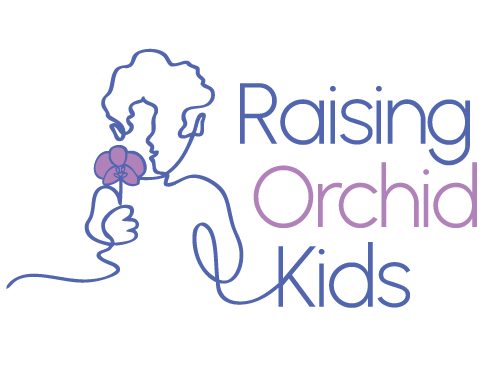In our experience, trying harder when parenting neurodivergent kids often backfires. Want to learn how to avoid the “shoulds” and “woulds” of a frustrated parent? How environment always beats willpower? Read on for eight concepts that will help you reframe the way you approach parenting.
Parents often say to us: “If she would just try harder …” or “If only I were more consistent …” Do those sentences sound familiar? Hidden inside them is a cultural myth–that behavior is mostly about character. Neurodivergent kids blow up that myth daily. Not because they lack character, but because their nervous systems are doing heavy lifting all day long. When the system is overloaded, “try harder” is like pressing the gas with the car in neutral–you’ll feel and hear big flare–but you’ll still be stuck with no progress. Let’s take a look at how environment debunks that myth.
1. Environment affects executive function
Remember that executive function is the brain’s project manager. It plans, prioritizes, starts, stops, shifts, holds the plan in mind, and resists distractions. It’s also fuel-hungry. For many Orchid (aka neurodivergent) kids, this system is not super reliable. Noise, transitions, vague instructions, hunger, scratchy clothes, bright lights–each of these depletes an Orchid kid’s battery. The more load on the system, the less “willpower” appears on the outside. This is why a child who can write a beautiful story at 10am “won’t write” at 7pm. It’s not a moral failing; it’s physics. Cognitive load wins.
2. Environments as “external brains”
When we say “environment beats willpower,” we’re not saying kids are fragile. We’re saying context matters. The physical, sensory, social, and temporal environment acts like an external executive function. Clear cues, predictable sequences, visible reminders, and calm pacing can outsource parts of the job that a tired brain can’t handle. That frees up precious working memory for meaning-making and connection.
Think of eyeglasses: no one argues you should “try harder to see” when you need them. Instead, you put on lenses that fit your eyes. Environmental design is like executive function “eyewear.”
3. Parents’ executive function matters, too
Here’s the part we often forget: as parents, our executive function is also finite. When you’re sleep-deprived, multitasking, or emotionally flooded, your project manager glitches. You forget the dentist form. You say “yes” when you meant “maybe.” You go from patient to prickly in three seconds. Then you feel shame, which … further drains your executive function. It’s a loop.
Designing the environment isn’t just for kids—it’s a compassion gift for your future self. Fewer decisions to make in the moment means more bandwidth for warmth, humor, and repair. The goal isn’t a perfect system; it’s a home that asks less of everyone’s willpower.
4. Why predictability is not “coddling”
Predictability is a calming mechanism. It decreases our perception of threat. Our brains are threat-detection machines and uncertainty pings the alarm. For a neurodivergent nervous system that’s already processing extra sensory and social data, small unpredictabilities (surprise errands, last-minute changes, new expectations) can feel like potholes at highway speed. When the road is smoother—clear sequence, early signals, consistent language—the alarm stays quiet.
Quiet alarms look like cooperation. Predictability doesn’t mean rigidity. It means the outline is dependable so humans inside it can be flexible.
5. The morality trap of “should”
“Should” language smuggles morality into logistics. Do these “shoulds” sound familiar?
- You should be able to get ready by yourself.
- We should eat at the table.
- He should remember.
Those shoulds treat executive function like a moral muscle, and when kids (or adults) can’t meet them, shame walks in. Shame is one of the fastest ways to shut down learning. If we drop the morality and look at mechanics, we can ask better questions: What’s the actual load here? What’s ambiguous? What’s noisy? Which step is the sticky one? Where could the environment carry more of the weight?
6. Dignity, agency, and the built world of home environments
Environments send messages about dignity. A home that only “works” when a child suppresses needs teaches that needs are problems. A home that adapts—by honoring sensory realities, allowing movement, making plans visible—teaches that people matter more than performances. This important message grows agency: “My needs are real. I can shape my world. I can participate in solutions.” Remember, agency is not the same as control. It’s the experience of being part of the system that affects you–and it’s deeply regulating.
7. Time is also an environment
We usually treat time like a neutral backdrop, but it’s a sensory input. Some kids feel time as fog; others as a pounding drum. Relying on an internal sense of time is asking the brain to hold an invisible variable while doing other hard things. Externalizing time—making it seeable and hearable—turns it into shared reality. Now we can relate to it together instead of arguing about whether five minutes is “almost done.”
8. Culture and environment make it easier for tools to work
Families sometimes say: “We tried a chart; it didn’t work.” Usually what failed wasn’t the tool, it was the culture around it: stressed adults, shifting expectations, tools that lived in a drawer, or a tone that framed supports as punishment. Tools work when they are woven into the relationship—when they reduce friction and preserve connection, not police it. This is why humor and warmth are not extras. They are the medium in which any plan survives.
Reframing through environment
We hope these concepts have encouraged you to think of alternative solutions to parenting challenges. In our experience, here’s what changes when we reframe and think differently:
- We move from compliance to capacity: “How do we grow the skill and reduce the load so the skill can show up?”
- We stop pathologizing “can’t yet” and start designing “can now.”
- We invest in the boring magic of consistency, not because we love routines, but because routines free up energy for the good stuff—play, curiosity, repair.
“Environment beats willpower” is an empowering worldview. It says humans are nervous systems first, and students, workers, and family members second. It invites you to build a home that expects brains to be variable and includes enough structure, softness, and humor to catch everyone on the wobbly days—kids and grown-ups alike.
Let us know what you think about this concept and if you need support putting some of it into play, reach out to us.
Photo by Gabe Pierce on Unsplash

